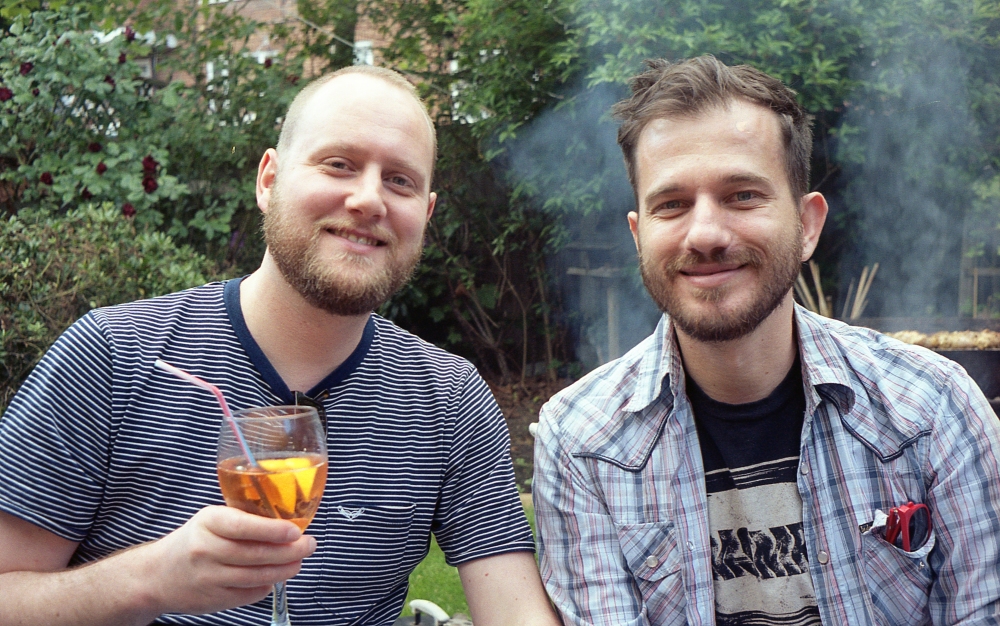Recently I had my local Max Spielmann photo store develop and scan a roll of Kodak Portra 160 film that I’d put through my Olympus Trip 35. Having not used that store before I was a little nervous at what might come back. My experience with using different development services up til now has been patchy, with Boots, LomoLab and Snappy Snaps all delivering quite variable results.
In this case I was actually quite pleased with the results, nice bright colours and punchy contrast, but the files were relatively small (1840 × 1232) so I wondered how different the images might look scanning them myself on the Epson V550.
My settings were 2400 ppi, using Digital ICE dirt and scratch removal, but leaving everything else off. Here are a few comparisons…


The minilab scan is bright, contrasty and saturated, almost to the extent that it looks like some sort of “lomo” filter has been added. However the Epson scan reveals the true natural and gentle tones that Portra is known for. In the crops below extra details can be seen in the eyes and the beard.

For personal preference I added a little warmth and saturation back into the scanned version to take it partway back towards the bold coloration that came from the lab.
Another few comparisons…
In all cases, the minilab versions make for perfectly serviceable, appealing photographs, but so much subtlety is lost. The lesson here seems to be that if you’re reliant on a local in-store minilab to do the scanning for you, you might as well stick to cheap colour film as the more sophisticated tones of the more expensive stuff is going to be completely lost.
That said I can’t imagine many people using stocks such as Portra without access to higher quality scans, but it’s interesting to see the difference nonetheless. I’ll certainly be saving my pennies and just get the labs to process the film and do the digitising myself in future.











Saving on scanning was the first reason to buy a scanner for me. But scanning film yourself also gives opportunities to control the quality to some extent. Either by using more advanced software like SilverFast, or by just scanning in tiff without any changes to the negative and then “developing” it in Lightroom. Good luck with it!
LikeLike
So my guilty secret is that I don’t have Lightroom. Been making do with Photoshop Elements which doesn’t give enough control. Think Lightroom has to be my next investment!
LikeLike
I’m honestly not the fan of this way of processing negs, it takes too much time to scan a roll into tiff, so I just rely on Epson software and then add contrast and sharpness if needed, which you can do easily without LR, I suppose. But the photography bundle from Adobe (Ps+Lr) costs only $10 a month, so you might as well try it.
LikeLike
Yeah I’d not be too keen to put everything through Lightroom, the Epson software is fairly capable in its own right.
LikeLiked by 1 person
Agree)) very much so.
LikeLike
This is a timely “real World” article for me. I was just wondering what operating system your scanner is working with? I’m very keen to buy the scanner but I have a mac and worry whether there will be compatibility issues.
Thanks
LikeLike
I’m using a 2009 iMac with the latest version of OS X and it all works fine!
LikeLike
That’s good to know. Thanks for the quick reply.
LikeLike